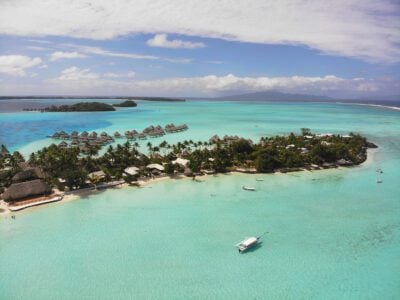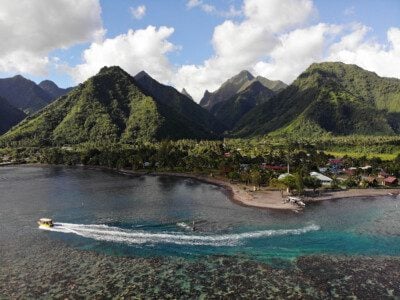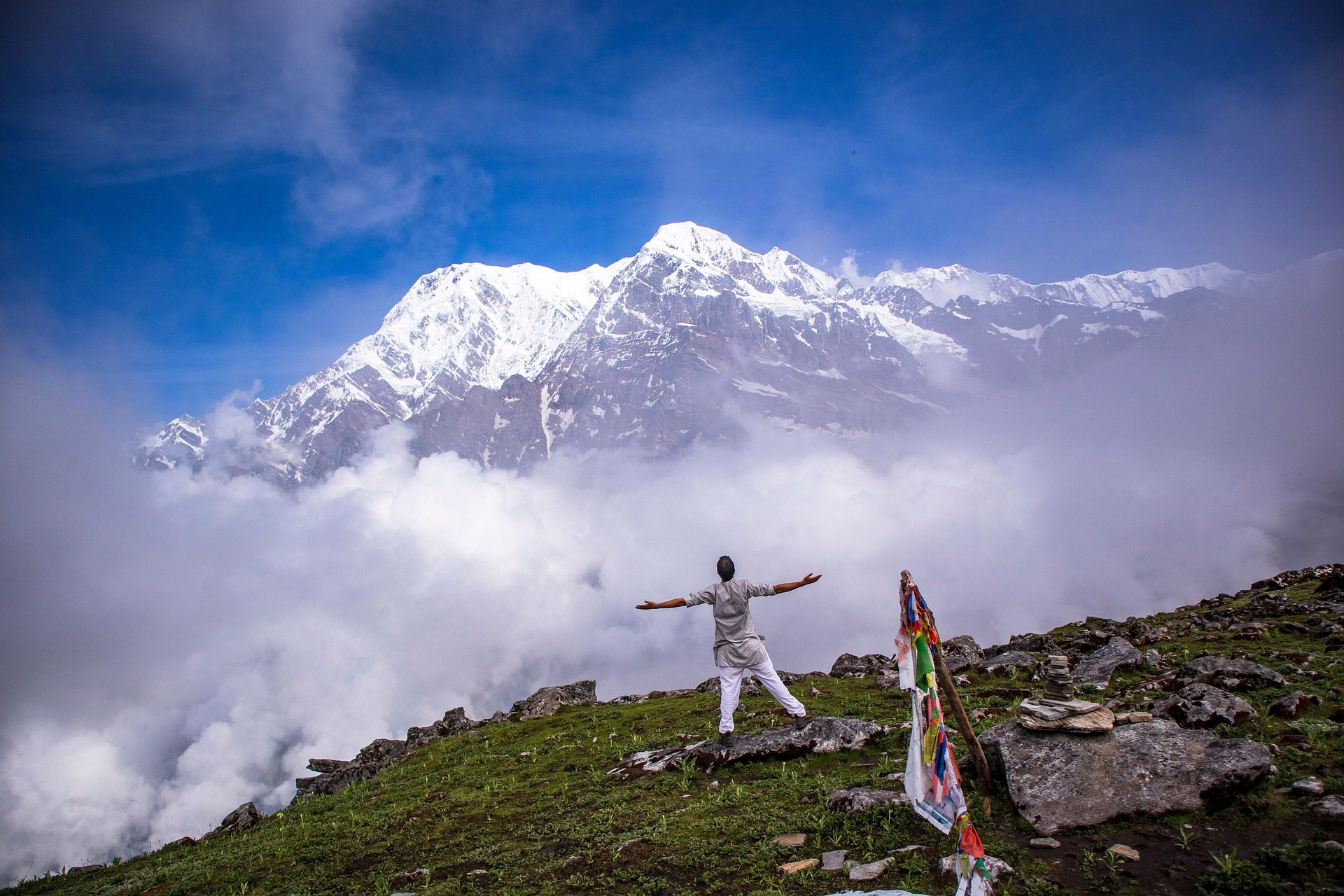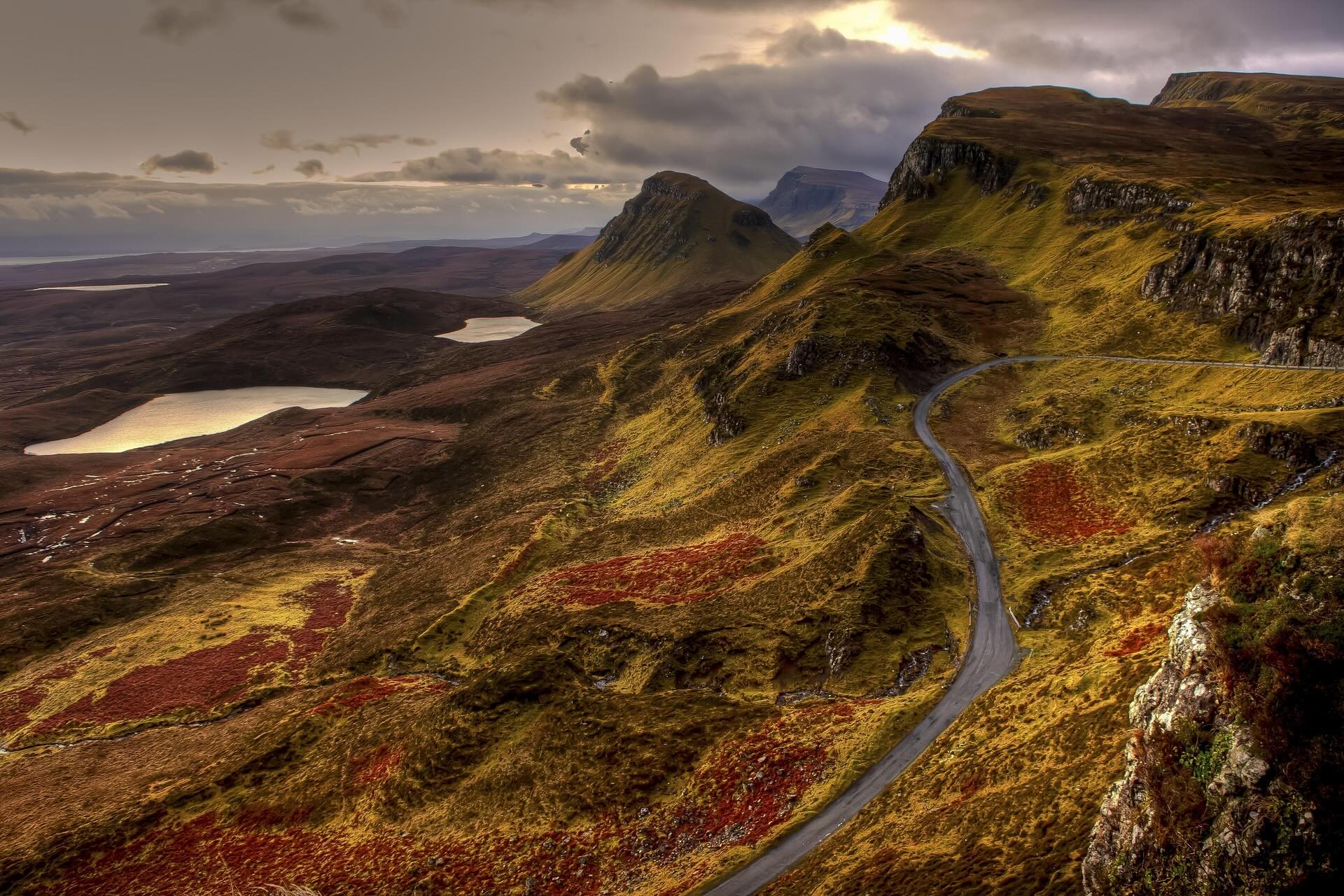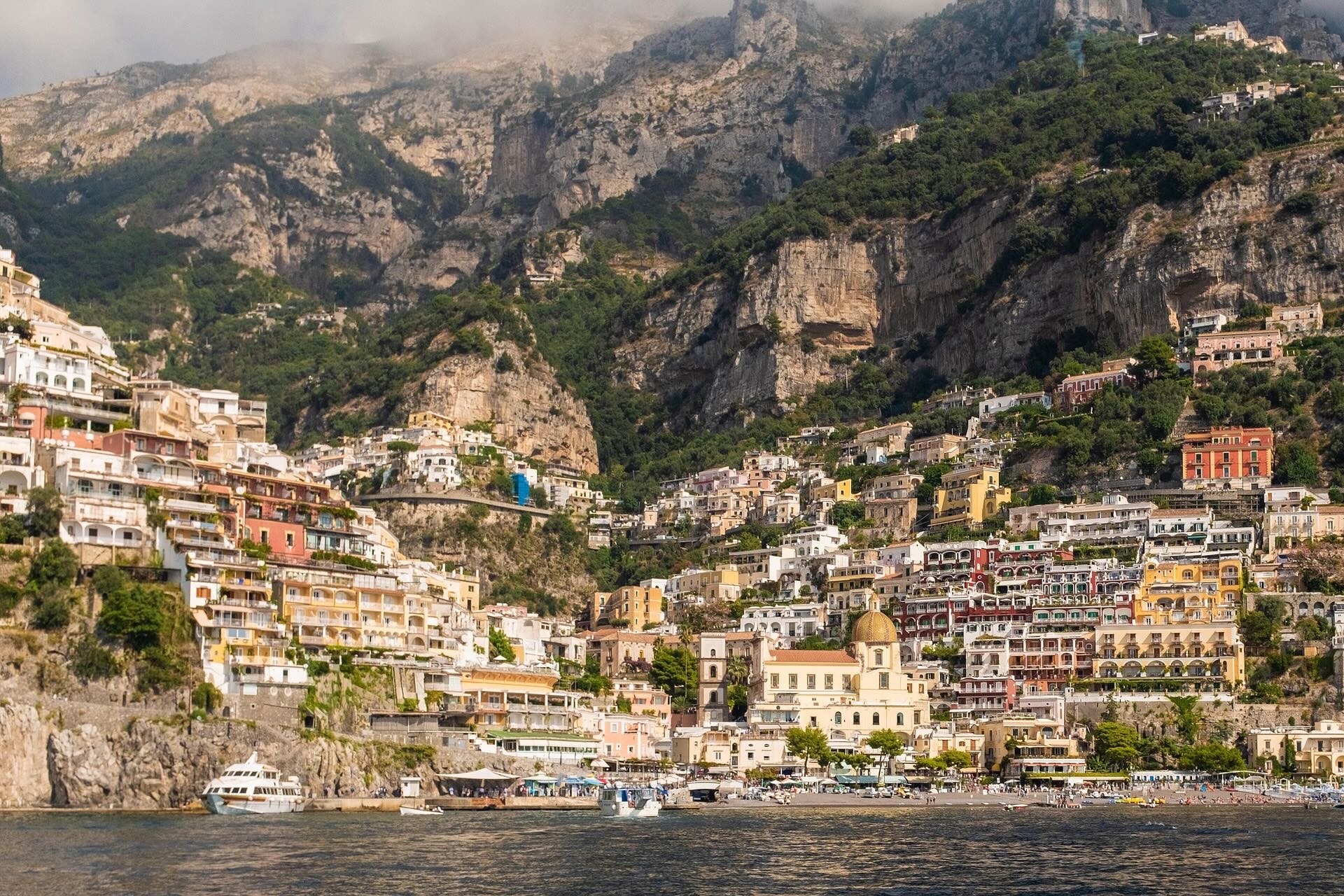I Cruised From Tahiti To Easter Island For The Third Time. Here’s What It Looks Like
The South Pacific islands evoke flashes of palm trees, luxury overwater bungalows, couples on their honeymoon, and fun in the sun. Sure, there’s plenty of that. However, the dreamlike islands are also the key to understanding one of humanity’s greatest achievements, despite their mysterious past. I recently returned from the South Seas after completing a third voyage from Tahiti to Easter Island. Here’s what it looked like.
The Polynesian Triangle is a region in the Pacific Ocean stretching from Hawaii to New Zealand and Easter Island. Within this imaginary triangle are about 1,000 islands and atolls home to Polynesians. Their shared culture, heritage, and way of life link these islands to each other despite the vast distances between some of them.
For reasons we will never know, the Polynesian ancestors began migrating thousands of years ago from around present-day Taiwan. Preceding the modern catamaran, using exceptional navigation skills, and demonstrating immense courage, Polynesians settled Aotearoa (New Zealand) around 1200 AD, completing their incredible conquest of the South Pacific islands.
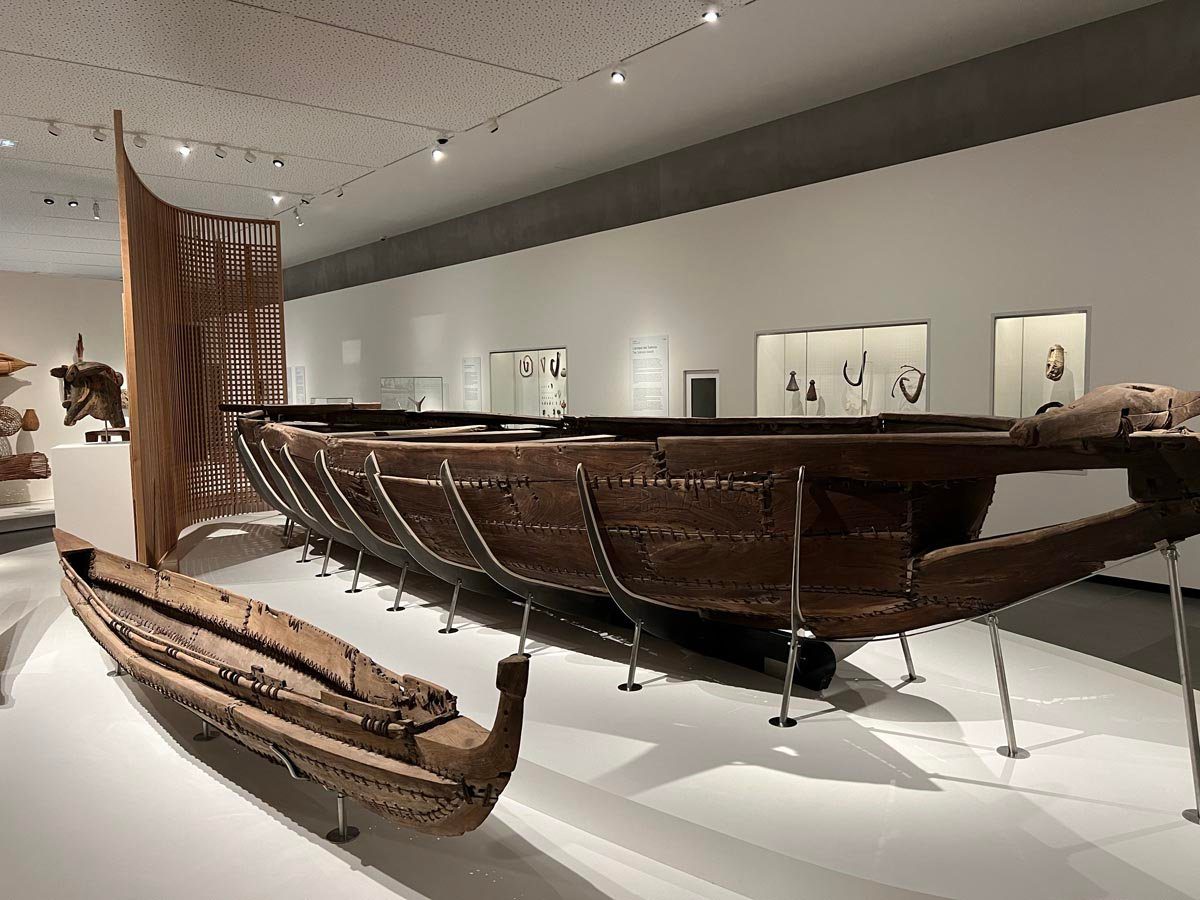
My eighth visit to the region brings me with a mission: to lead a group of 22 travelers on an expedition-style cruise from Tahiti to Easter Island. It’s my third time undertaking this challenge, the first since the COVID pandemic. I last completed this 14-day, 2,629-mile journey with an extraordinary group in 2019.
This voyage will take a similar path, beginning in Tahiti and heading to Pitcairn Island via the Tuamotu Atolls and the Gambier Islands, followed by a lengthy final leg to Easter Island. Here is a summary of the adventure in pictures.

Tahiti – The Queen Island
Our journey begins in Tahiti, the main island in French Polynesia. After several long flights, we settled into the InterContinental Hotel and its paradise setting. We spent the next two days exploring the island’s wild interior in Papenoo Valley and circling Tahiti’s “bigger half” – Tahiti Nui.

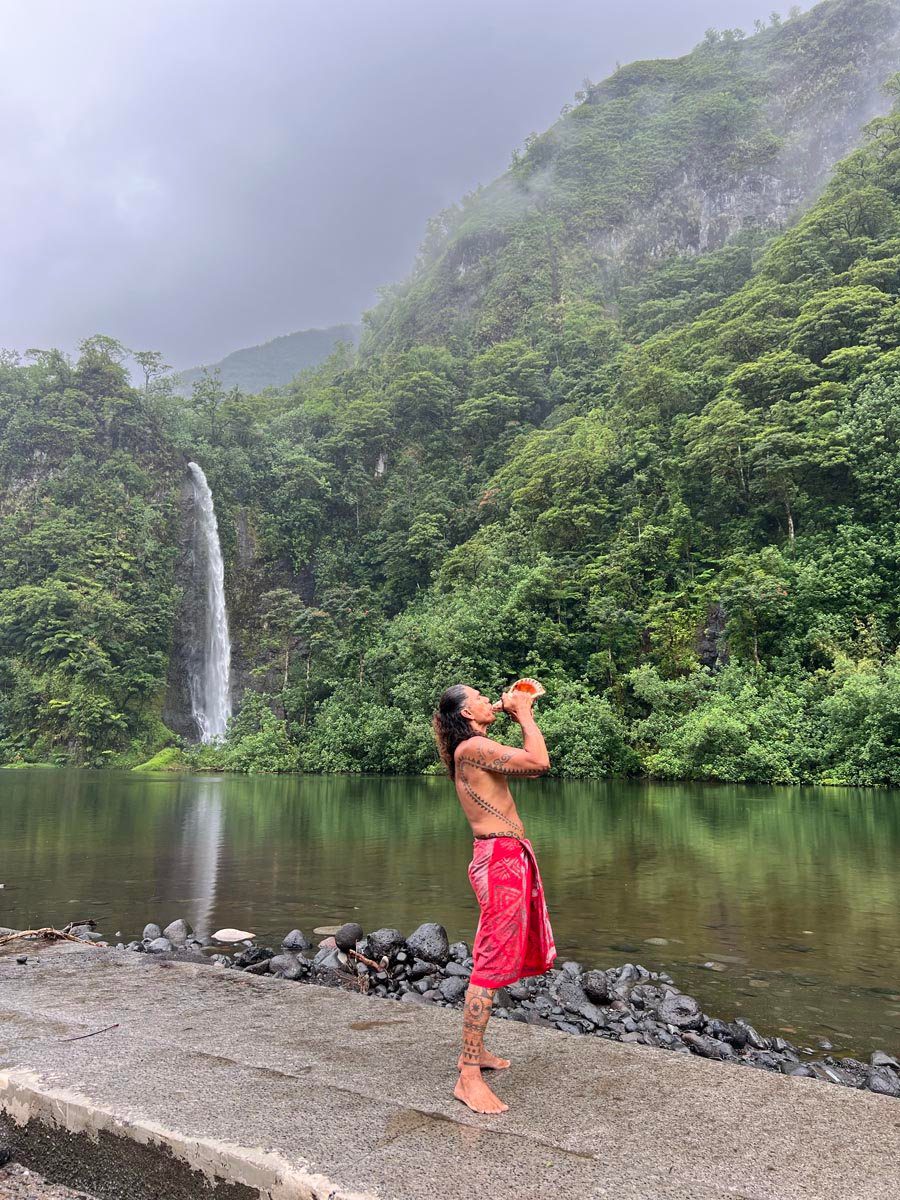
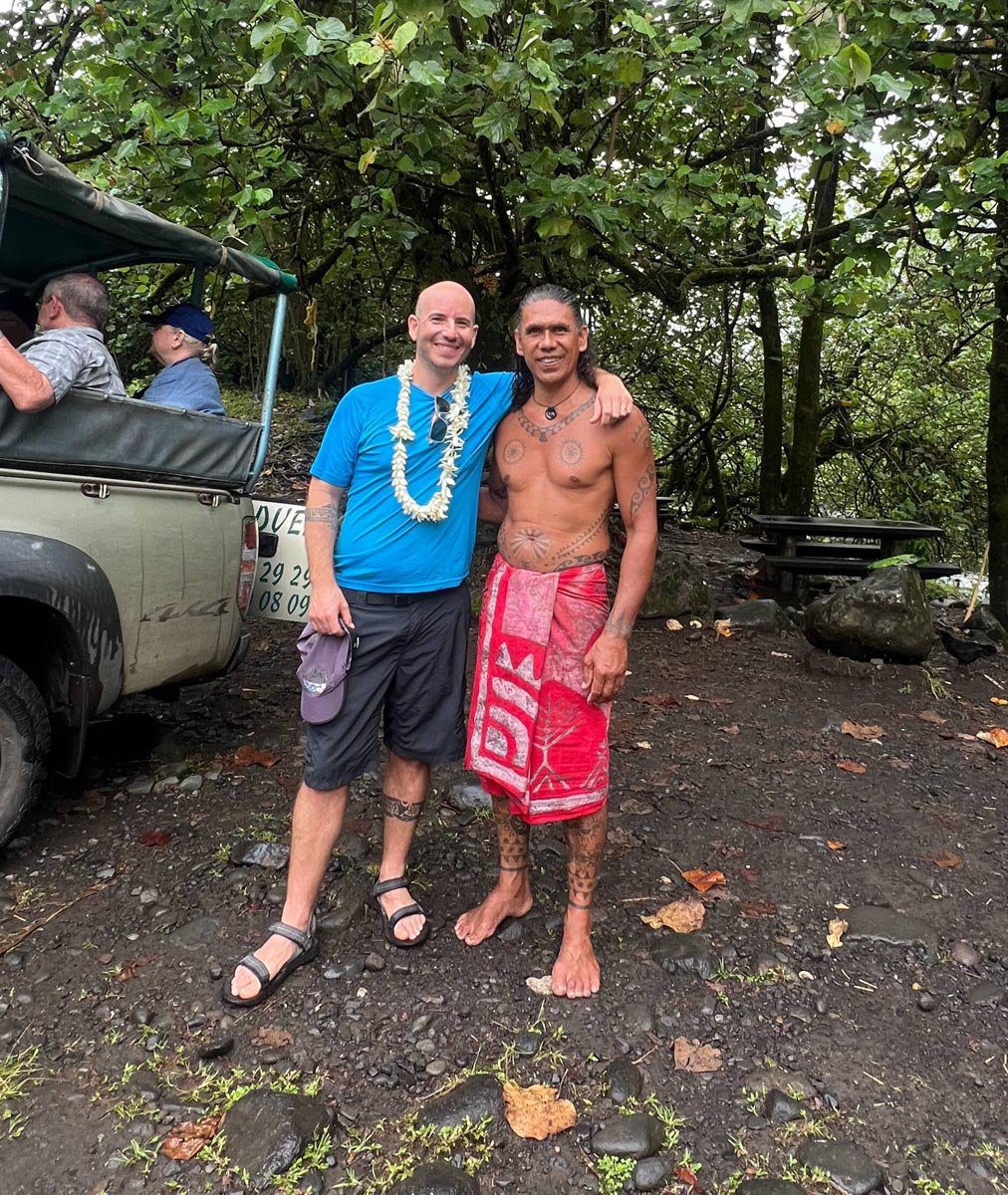
Moorea – The Heart-Shaped Island
We boarded Le Boreal, a 132-stateroom luxury expedition ship in Papeete, French Polynesia’s capital, and officially began the long two-week cruise. Our first stop was Tahiti’s neighbor, the island of Moorea. The island owes its heart shape to the deep twin bays that puncture its northern coast. In Moorea, you start to feel that stereotypical “South Seas vibe.” Life is calm, but still not entirely off the grid. We spent a full day swimming with sharks and stingrays in the lagoon and exploring Moorea’s north coast on 4X4s.

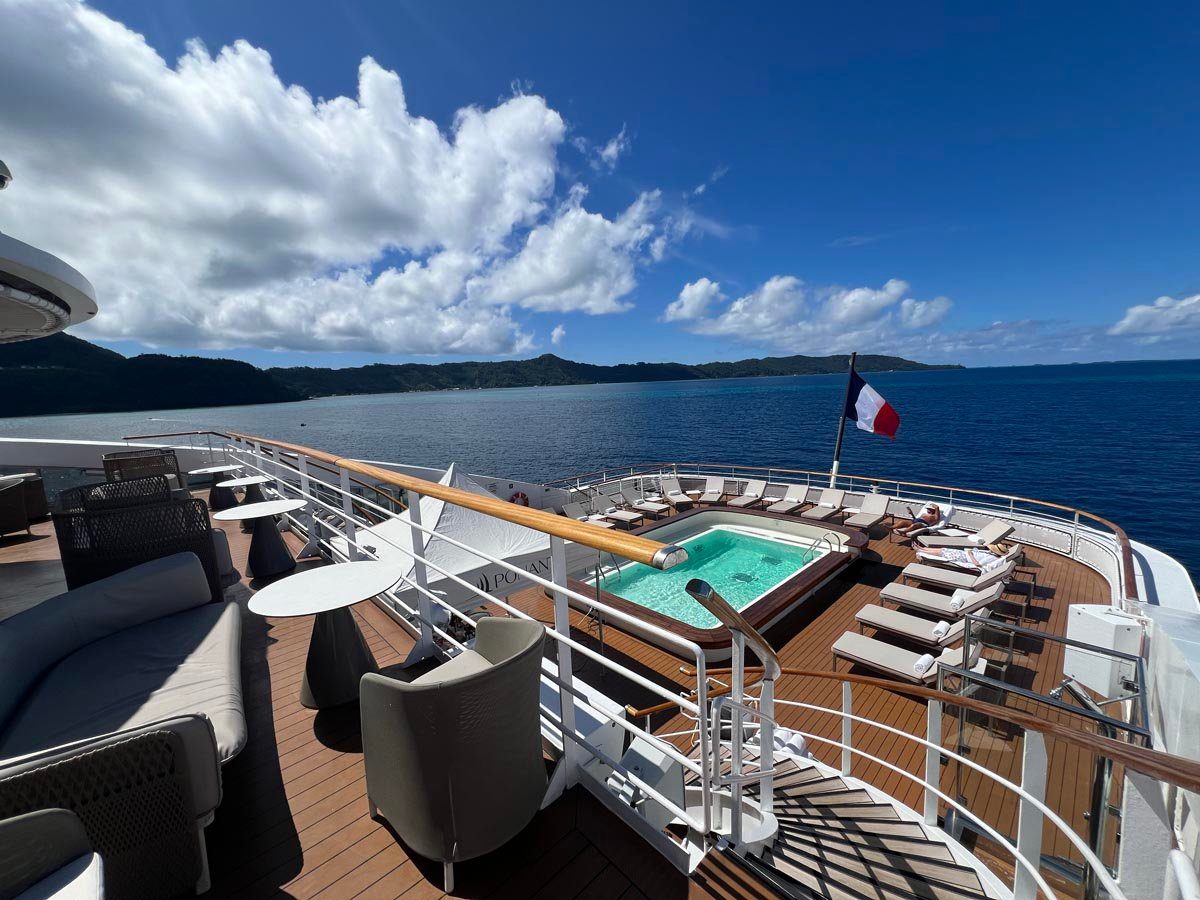
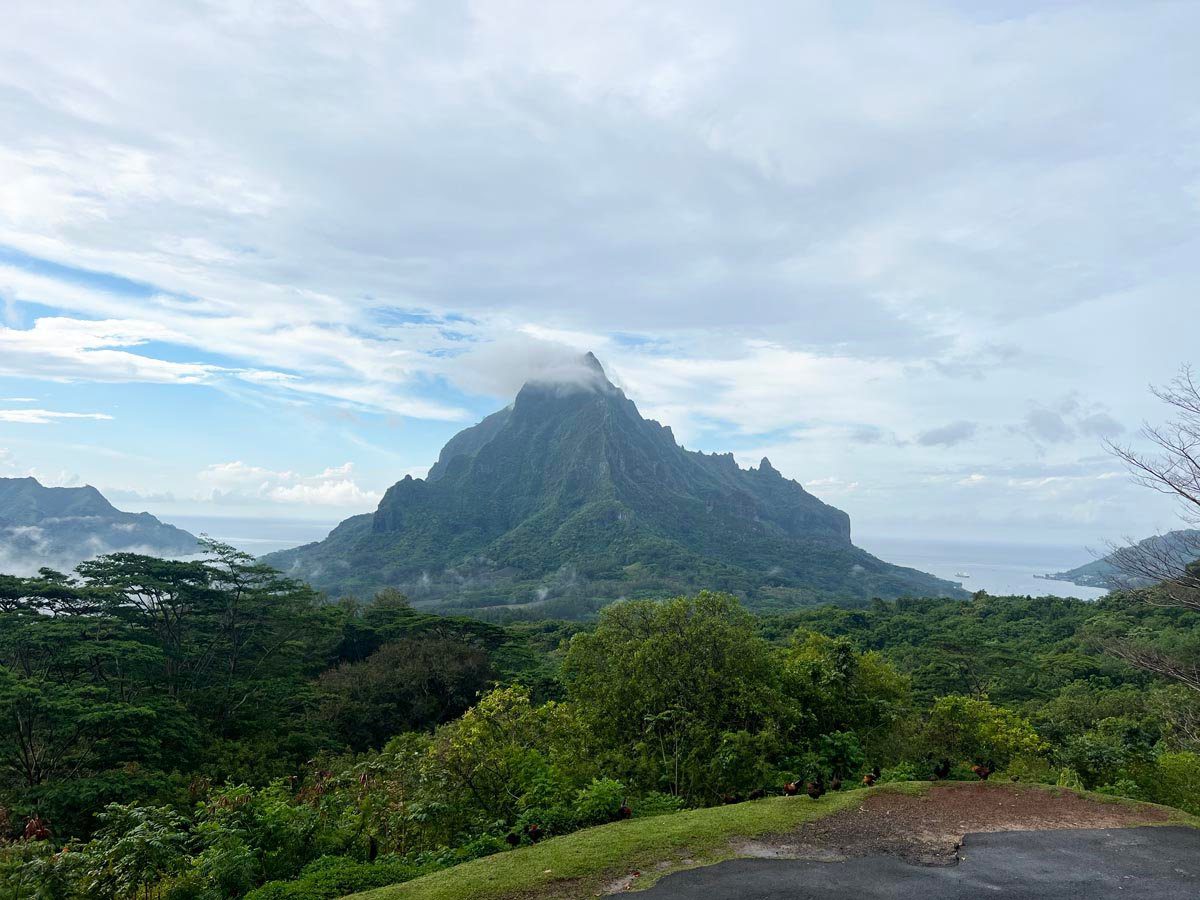

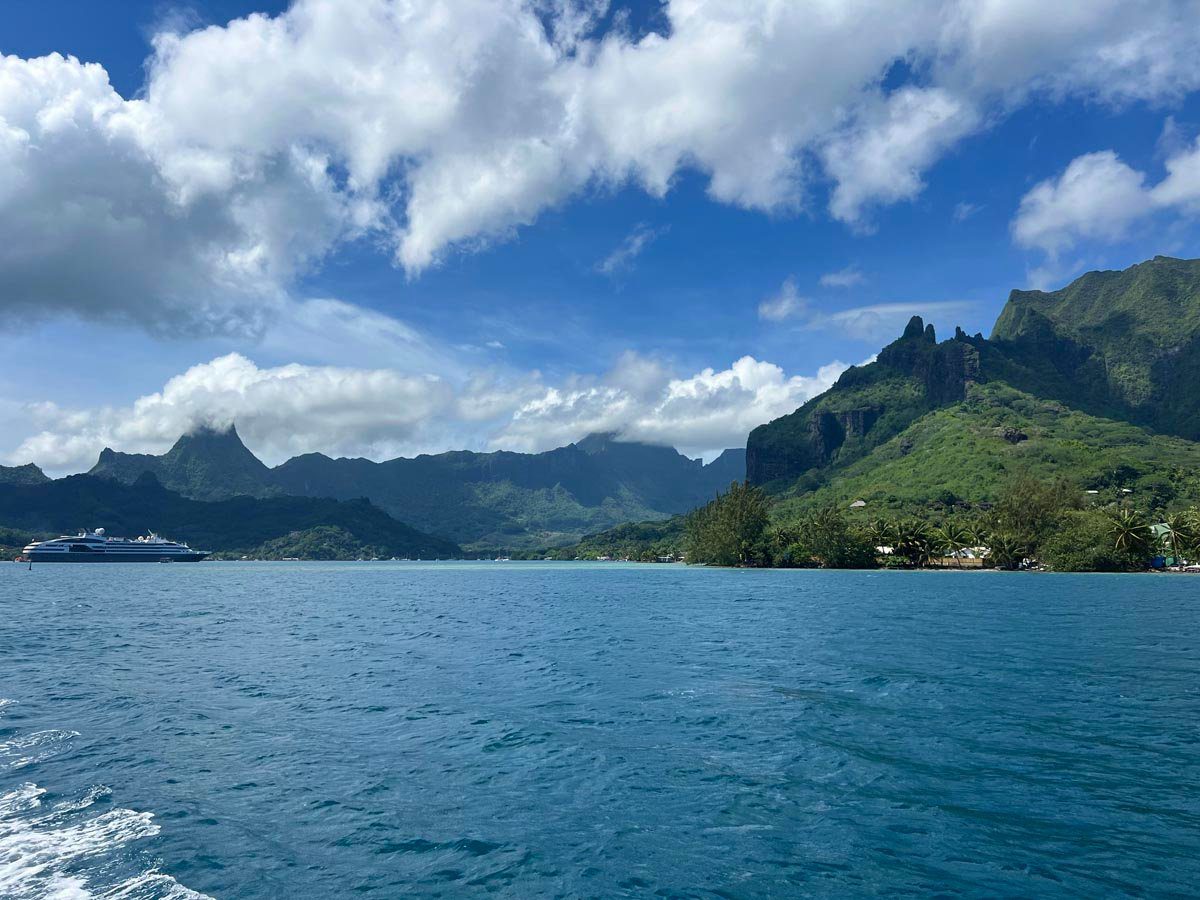
Anaa – Pure Tranquility
After a day of cruising, we left the Society Islands and entered the waters of the Tuamotu Atolls, the longest chain of coral atolls in the world. On previous cruises, we called at “major” stops in the archipelago, such as Fakarava and Rangiroa, but this time, our stop is at Anaa, a beautiful and seldom visited island 217 miles east of Tahiti. Anaa is an oval-shaped atoll with a current population of only 500. In the old days, its fearless warriors casted their influence over the region, but nowadays, the most exciting action on the island is seeing a humpback whale breach the surface.
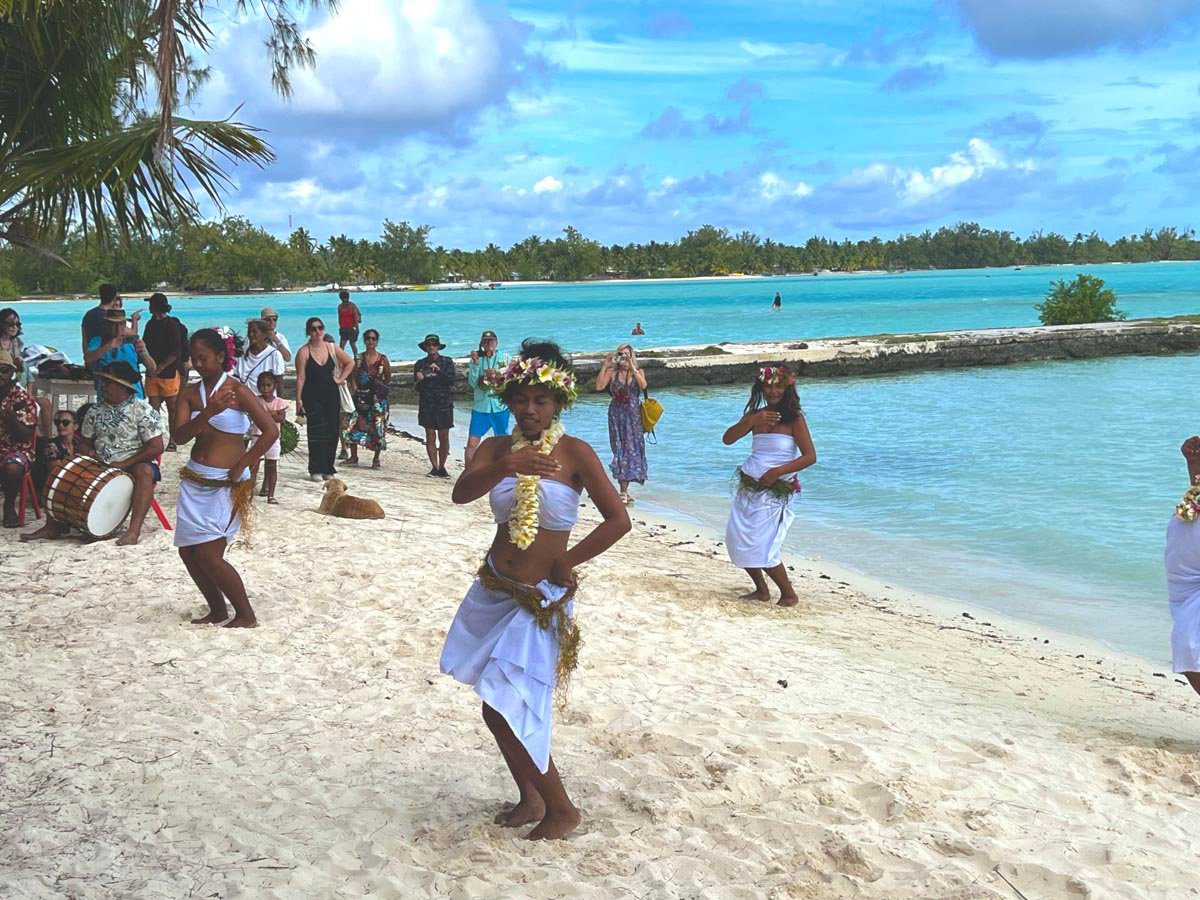
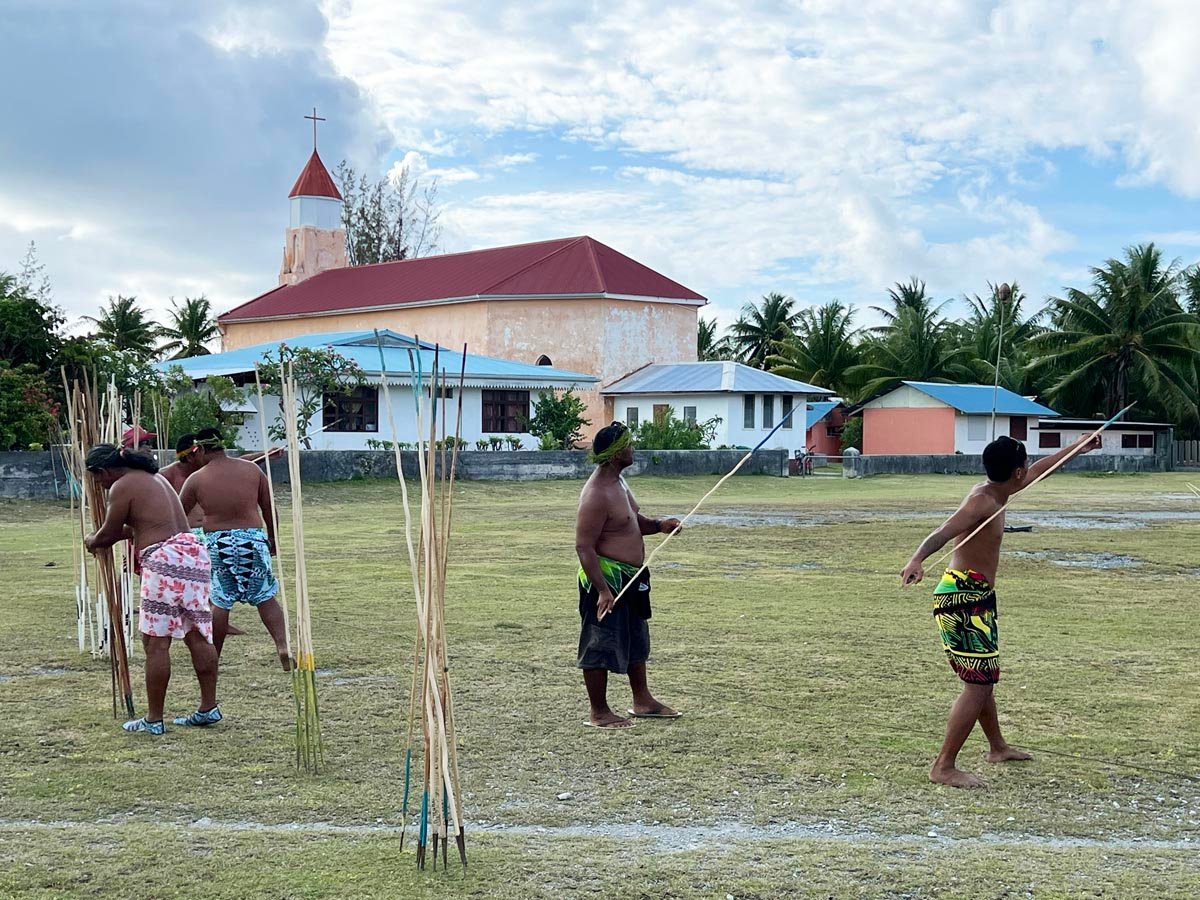
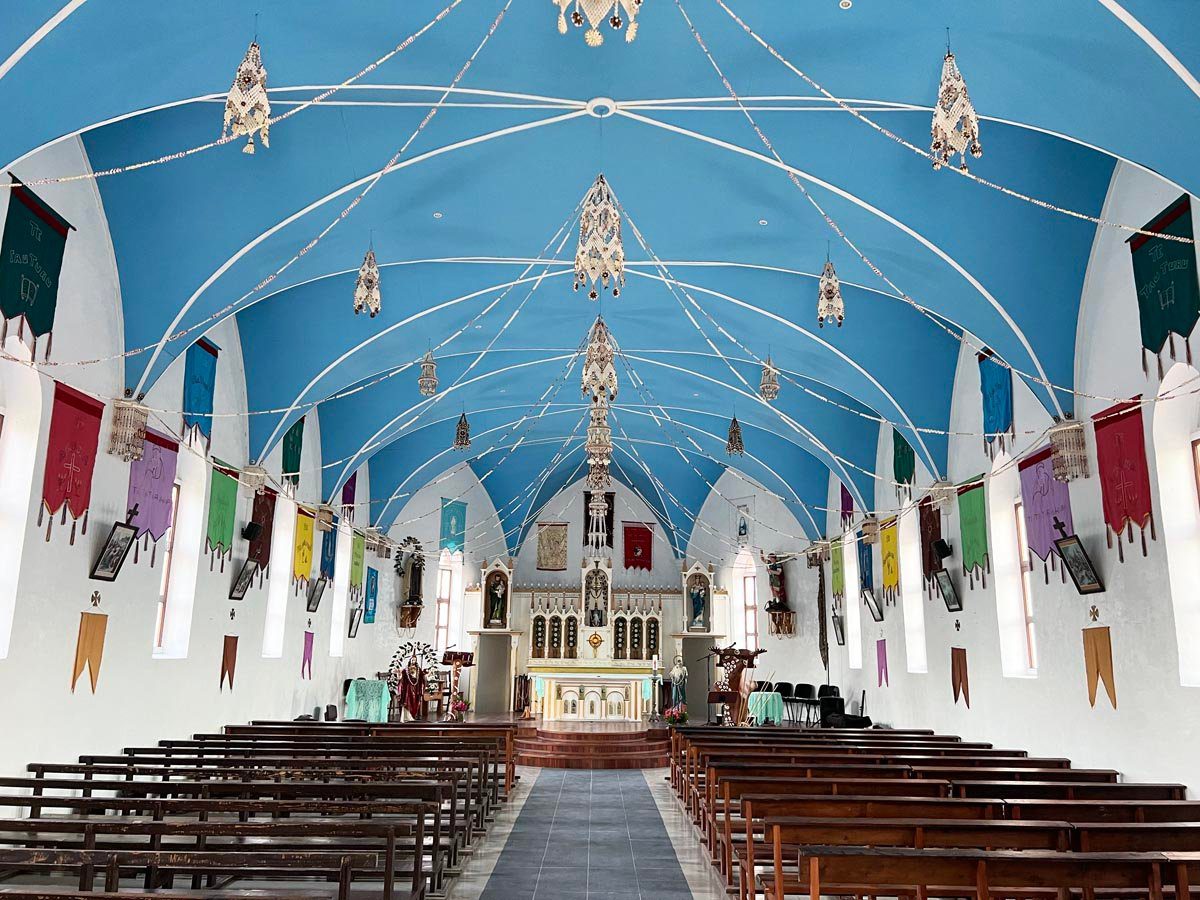
Mangareva – Priests and Pearls
After two days of cruising, we reached the Gambier Islands, the third and last archipelago we’ll visit in French Polynesia. We spent a day exploring Mangareva, the main island. The tragic history of the Gambier Islands begins as an all too familiar tale. In pre-European times, the powerful Mangarevan empire influenced the region, even likely founding a trading post with distant Pitcairn Island. Prosperity fueled population growth, leading to widespread “slash and burn” tactics that sped land erosion. A quick collapse followed, including tribal warfare and resource scarcity, to the point where even building fishing canoes became a mighty challenge.
French Catholic missionaries entered this social vacuum, quickly converting the population and seizing the natural pearls that were then found on the lagoon floor in abundance. Led by Honore Laval, the missionaries de facto ruled the Gambiers over the following decades. They “convinced” the locals to adopt a strict behavior code and construct mega projects, including massive cathedrals, palaces, watchtowers, and convents. Many Polynesians did not survive this period until “freedom” finally came in the form of a French protectorate in 1844.
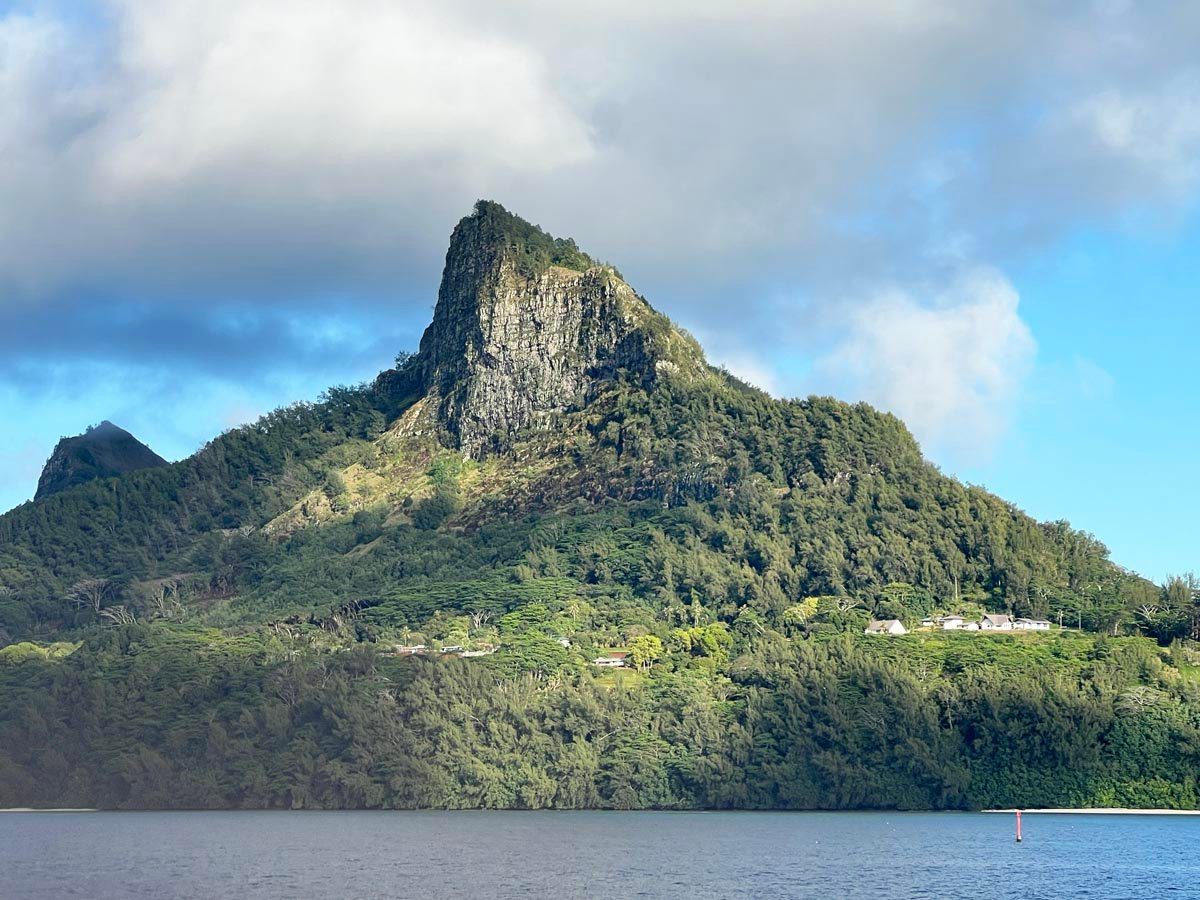

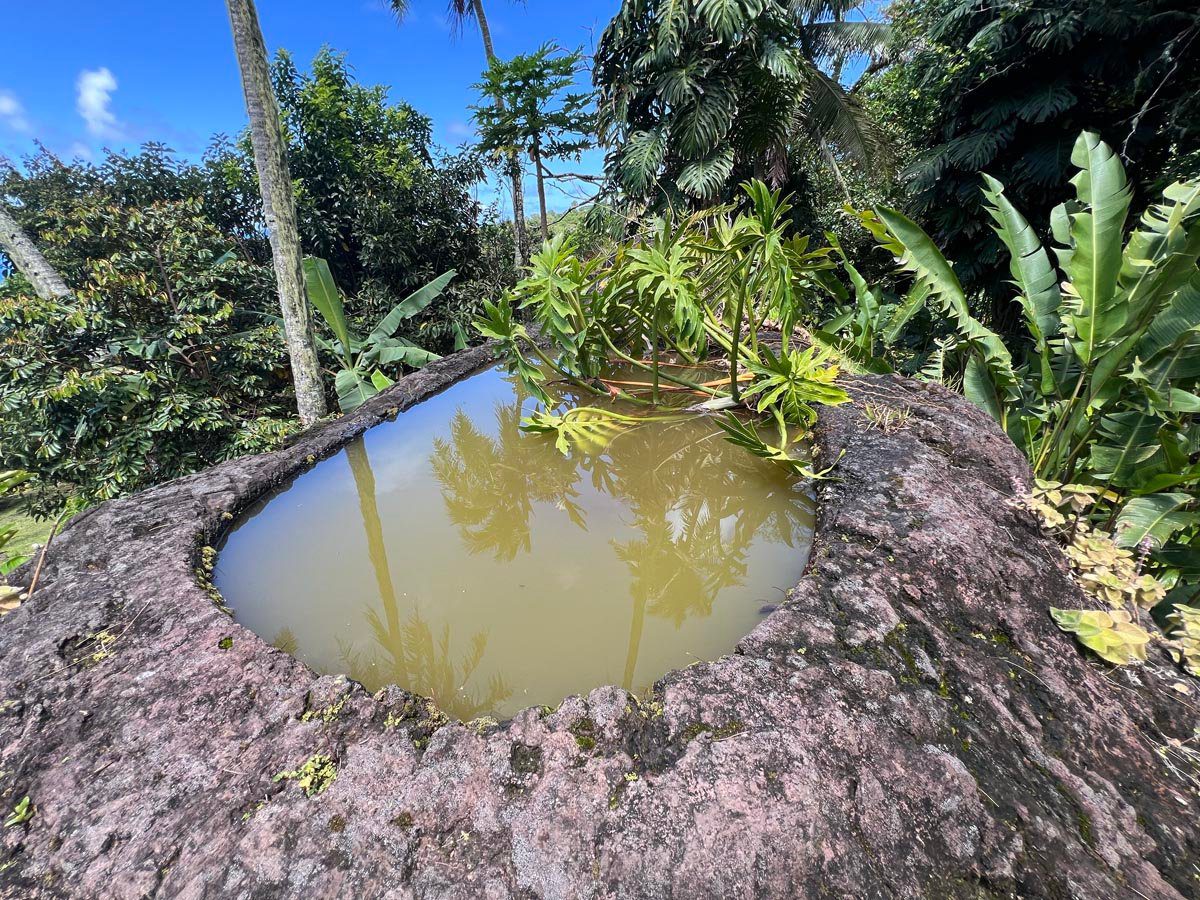
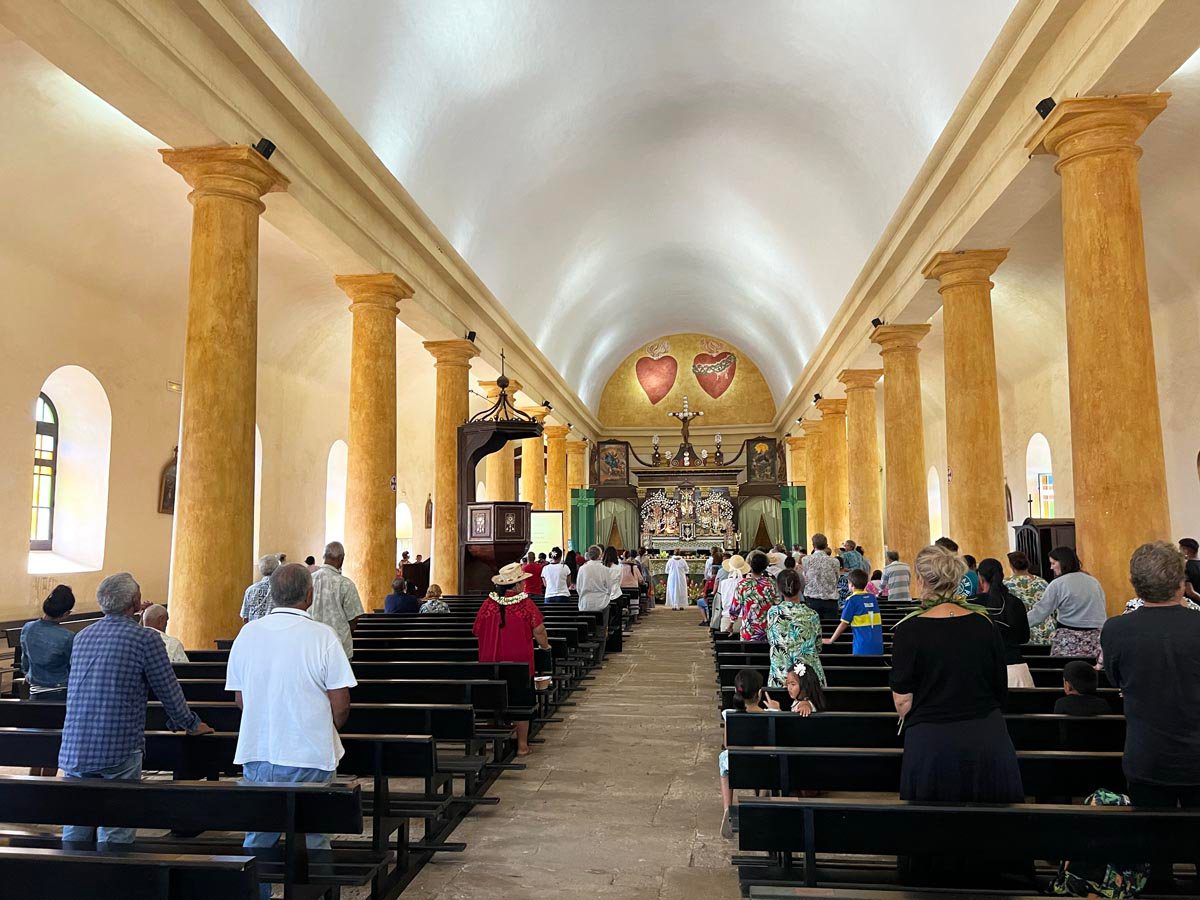

Pitcairn Island – Mutiny on the Bounty
The next stop is my favorite on this cruise. Visiting Pitcairn Island is not only a right of passage for any South Pacific enthusiast like me, but this stunning literal speck of land in the middle of the endless blue is a real treat for anyone familiar with the story of the Mutiny on the Bounty. The only way to reach Pitcairn is by boat, but even if you manage to reach the island, calm weather is needed to make landfall using small zodiacs.
We spent a few hours exploring parts of Pitcairn, walking through the capital, Adamstown, and seeing the story of the mutiny’s aftermath come to life. The most interesting part of our visit was speaking with the locals, some of whom are direct descendants of the mutineers, and learning how this community survives in the middle of nowhere.

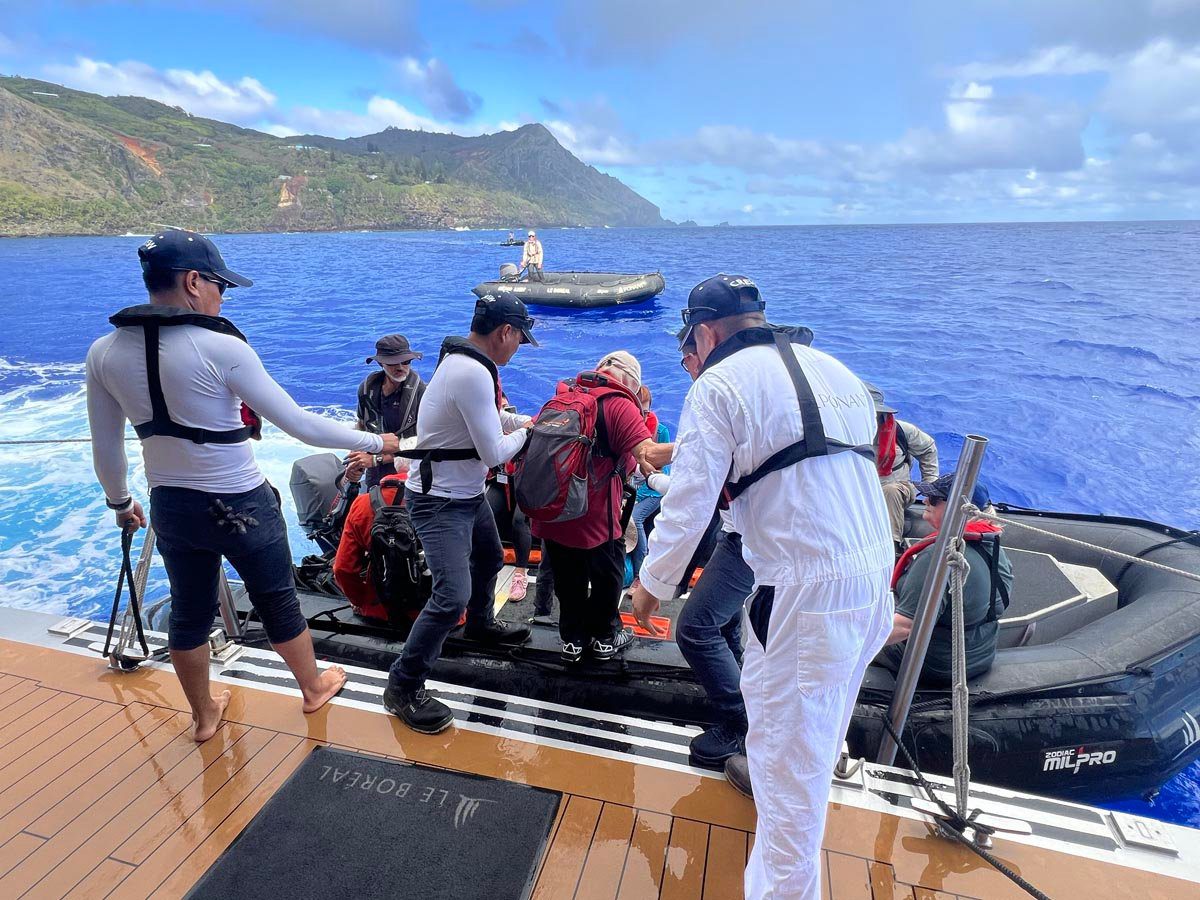
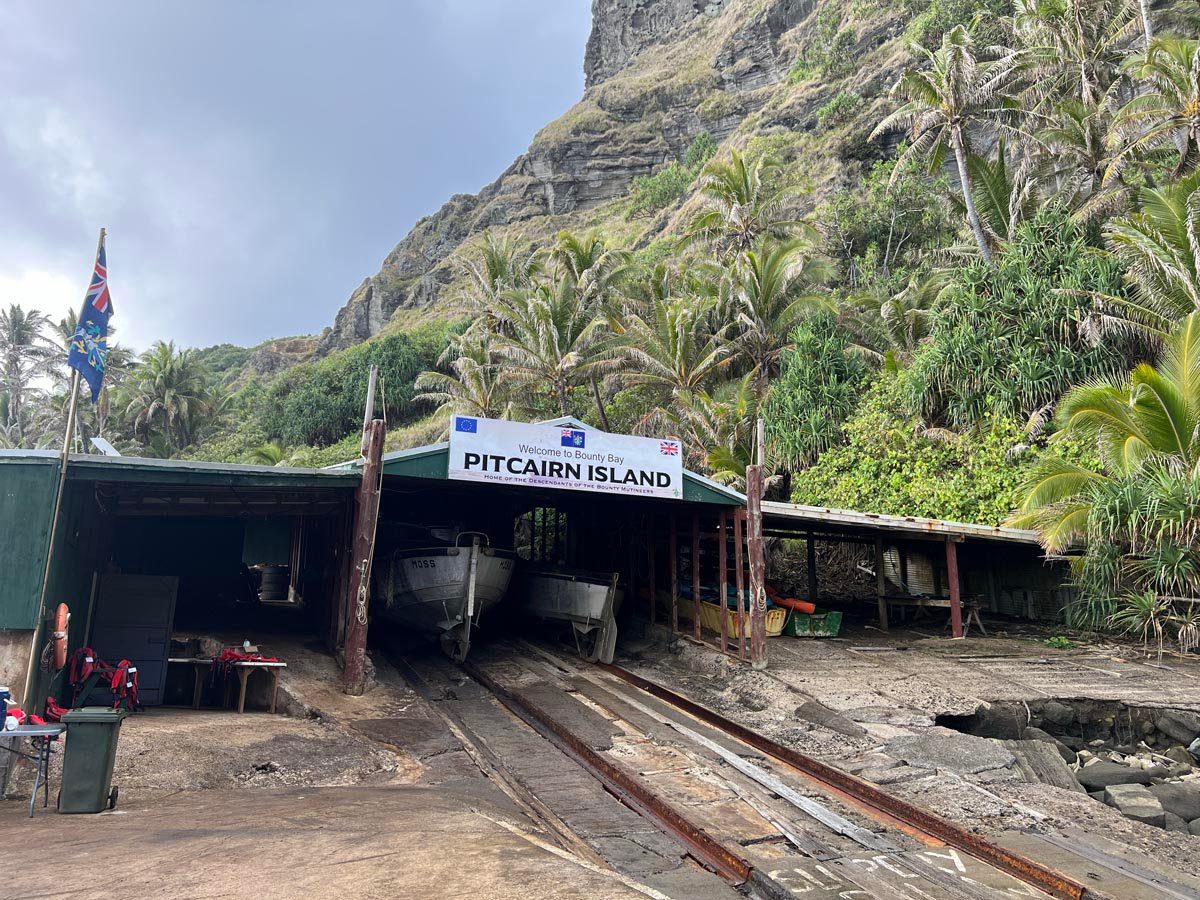


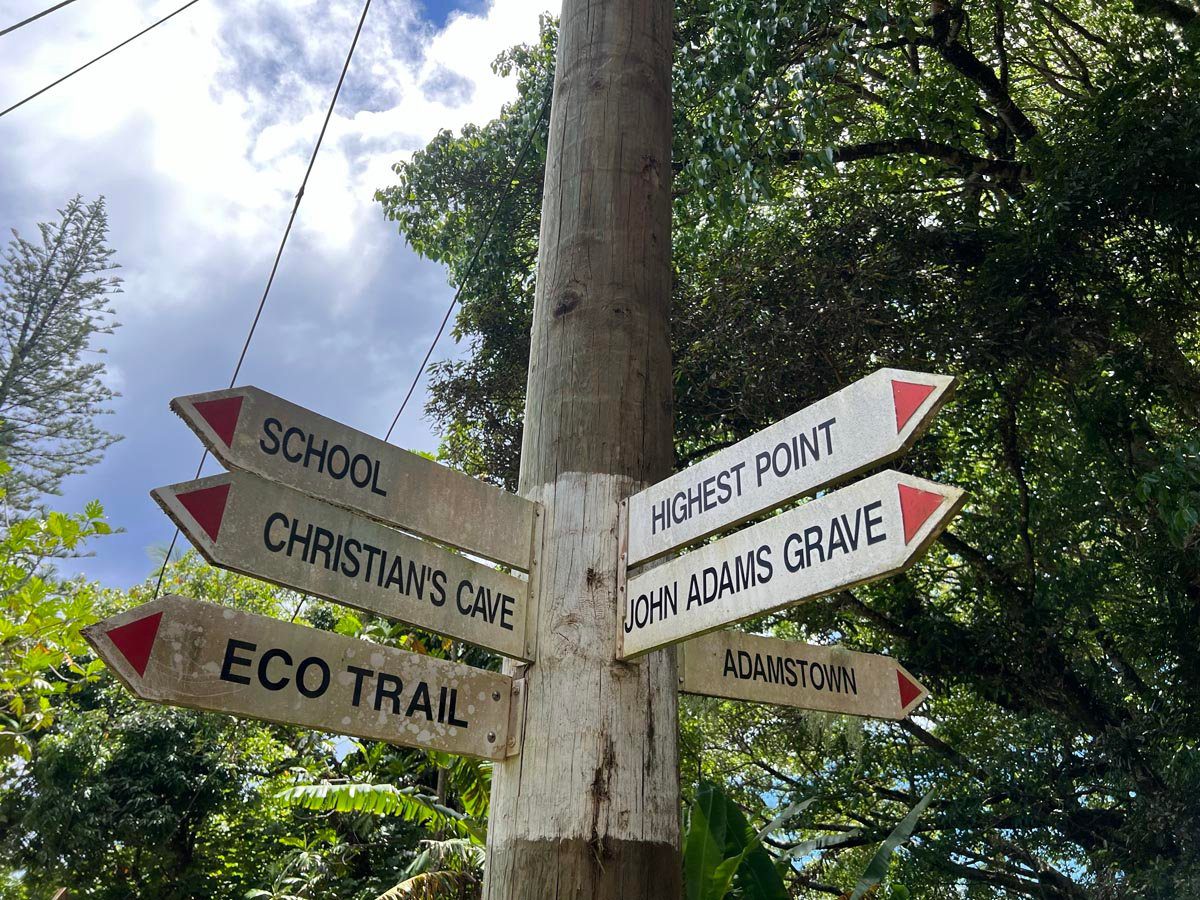



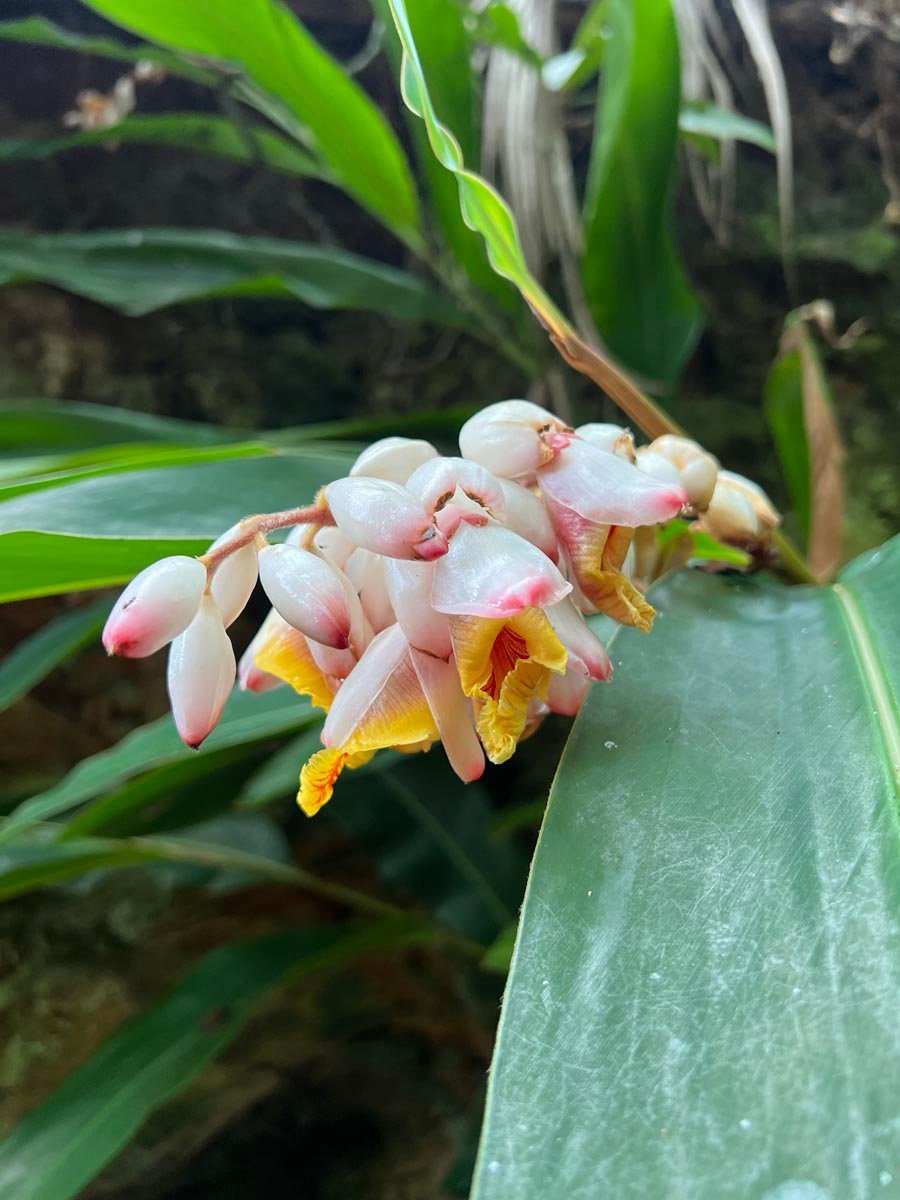
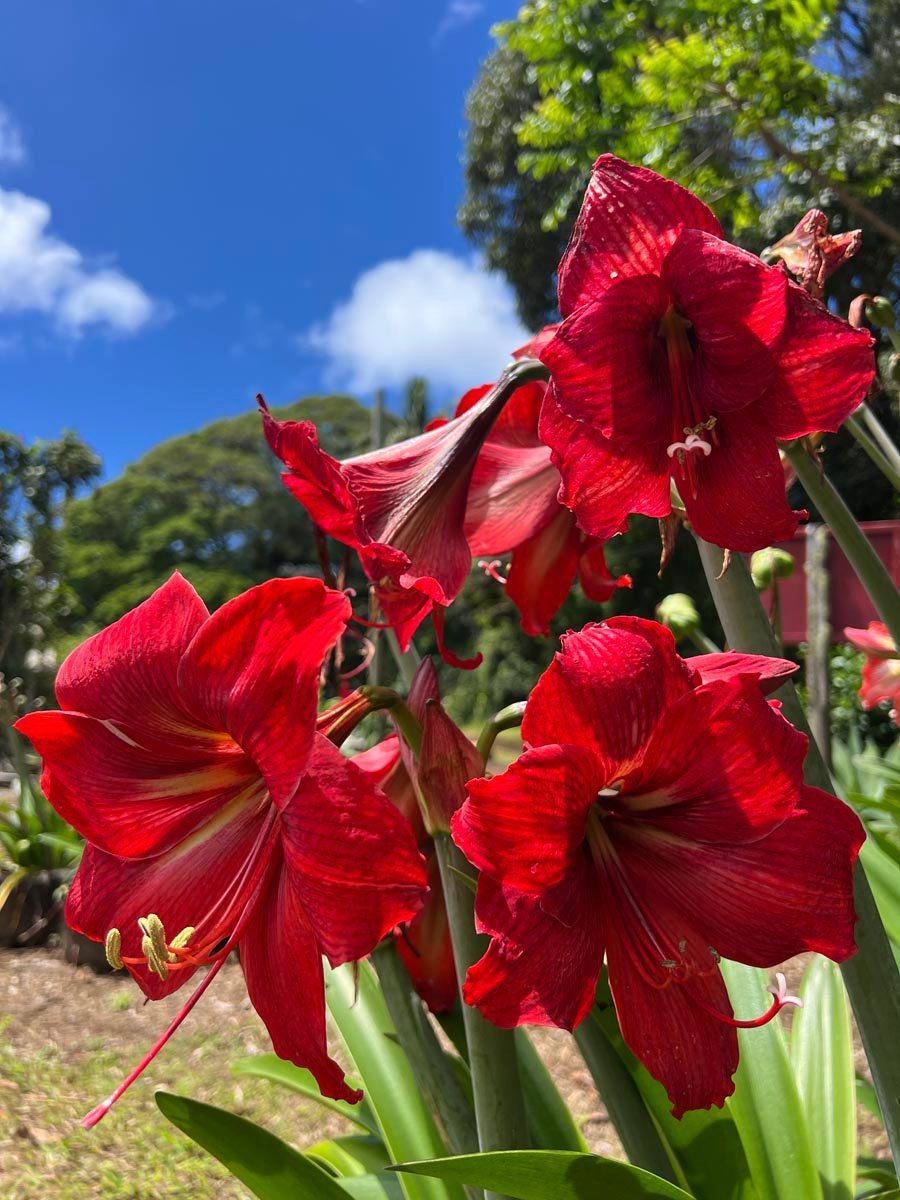

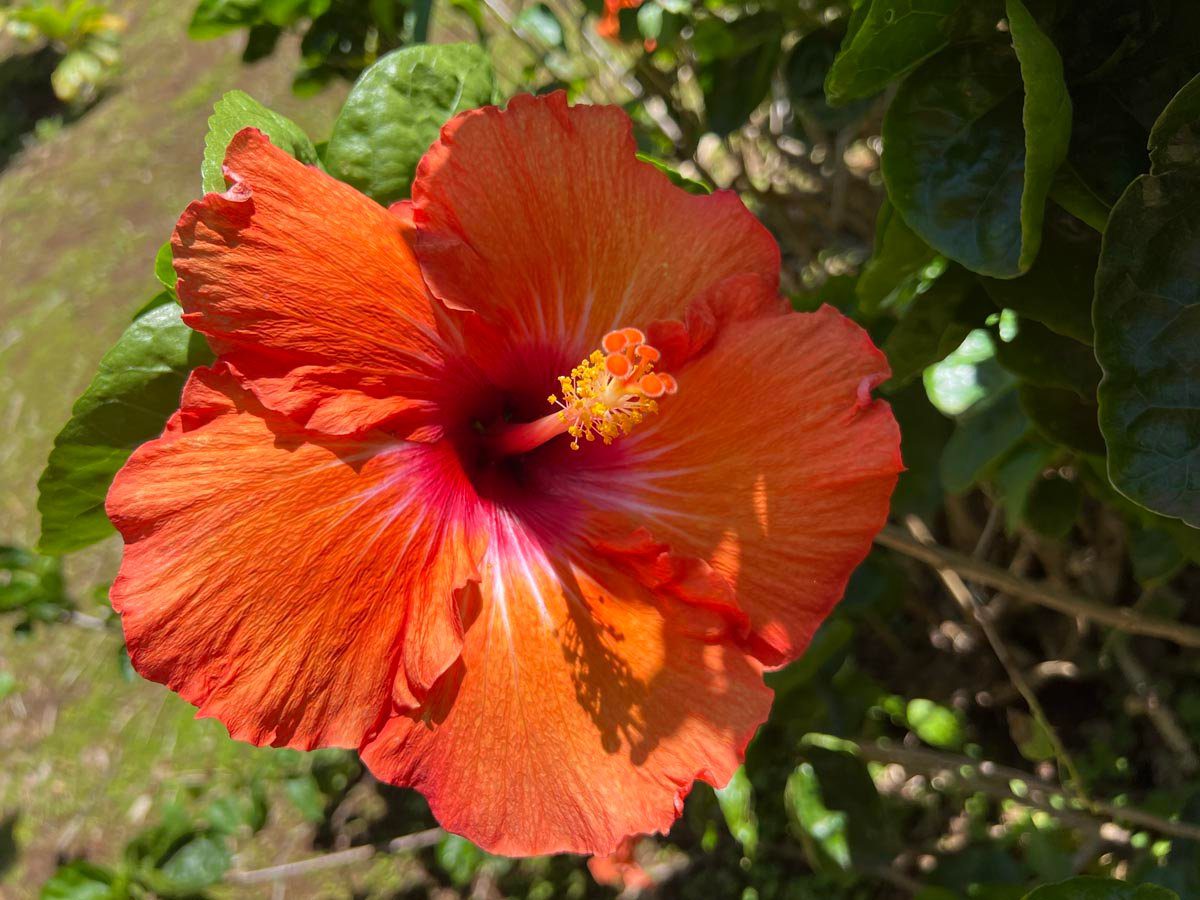
Easter Island – Polynesian’s Greatest Secret
It took four days of cruising to reach Easter Island from Pitcairn. We’re at the easternmost edge of the Polynesian Triangle, but by the look of the place, one could confuse Easter Island with parts of Europe. We still see palm trees here and there, but the barren, low-lying landscape is strikingly different than other parts of Polynesia. Perhaps this is why the island’s original settlers found it so hard to live here. It was vastly different from home, much colder and isolated than anything they had previously experienced.
This might suggest why they turned to constructing about 1,000 statues, known today as moai, with some reaching colossal dimensions. Tribal competition and hunger fueled a violent civil war, the destruction of the moai, and the rise of the birdman religion. Years after European “discovery” on Easter Sunday, 1722, slave raiders put the final nail in Easter Island’s coffin, taking thousands on what would be a one-way ticket, including just about anyone who knew anything about the old ways of life. The few who were returned infected the tiny population on the island with disease.








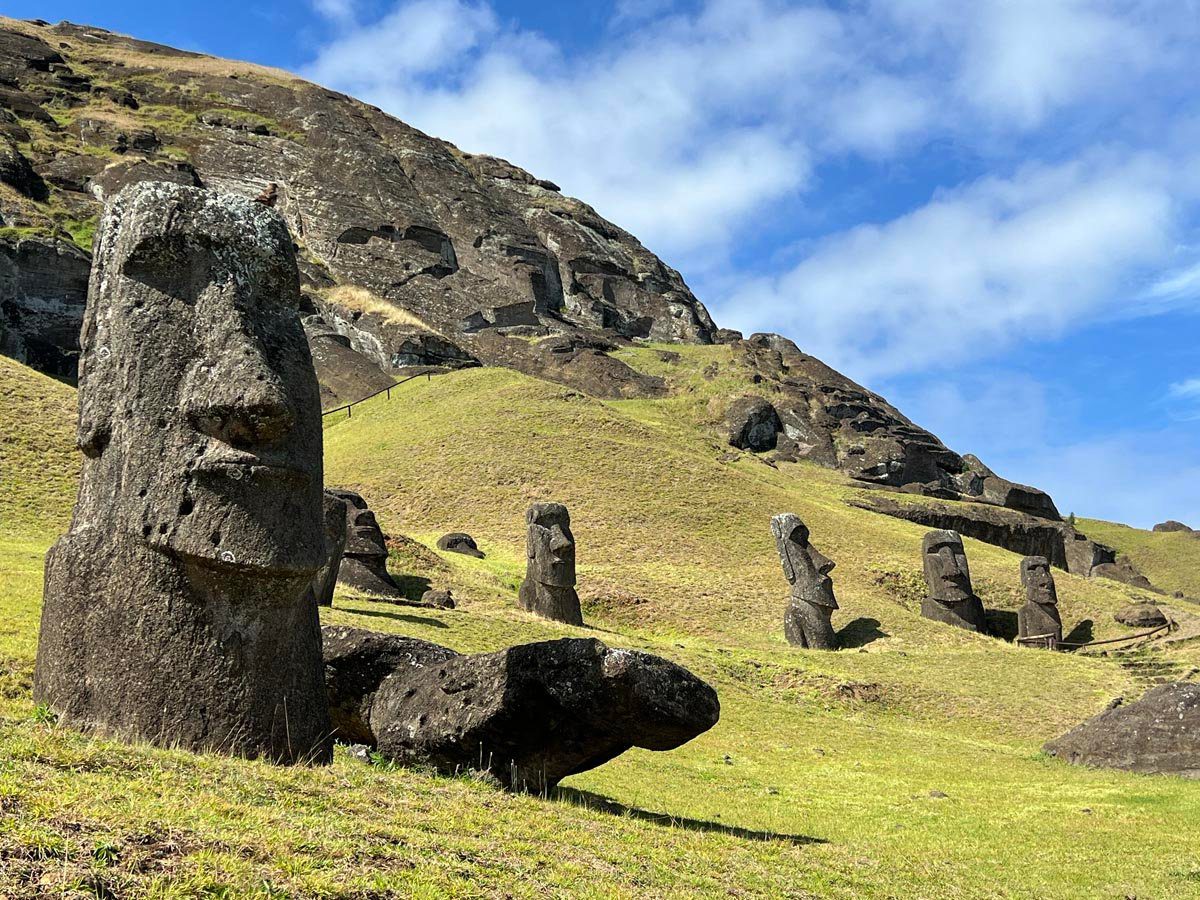
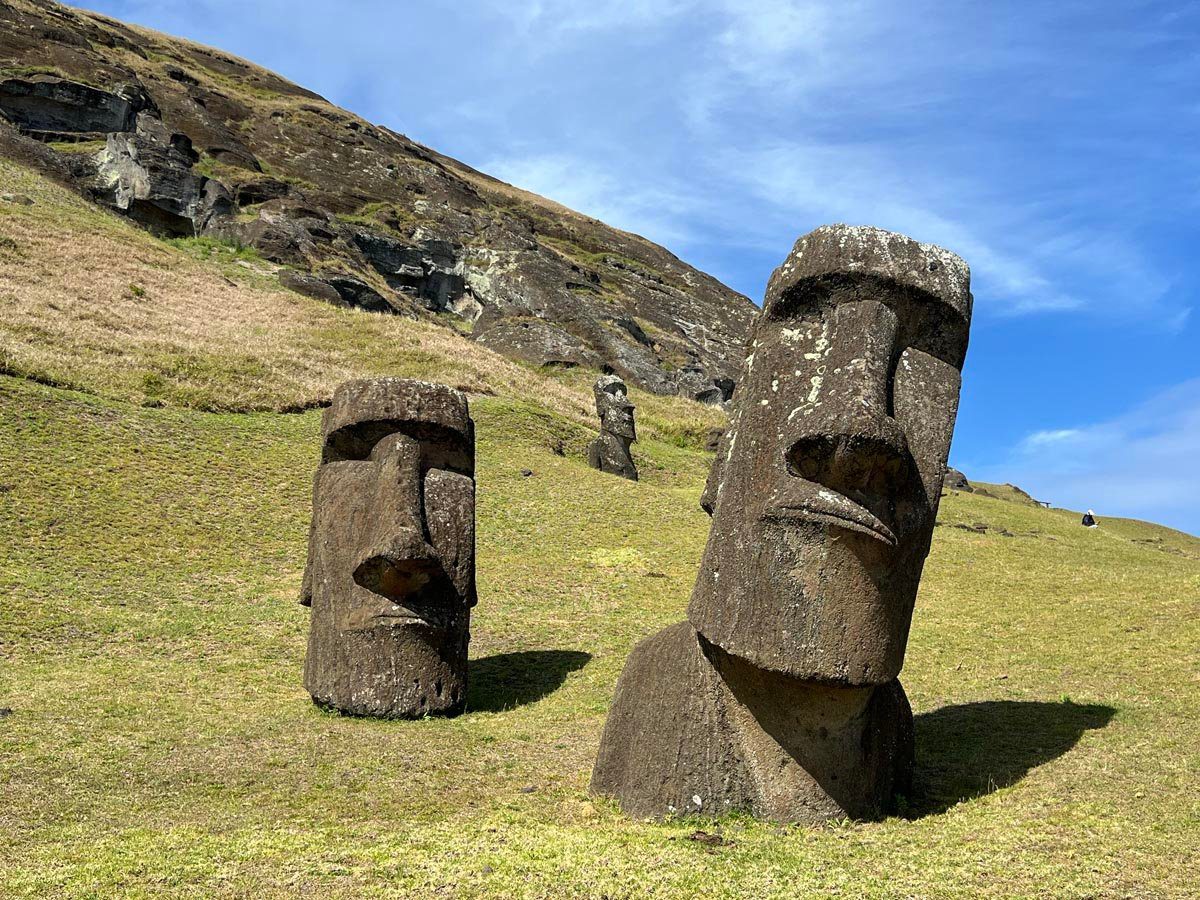
Final Thoughts
Every time I complete the voyage from Tahiti to Easter Island, I can’t help but ponder over the rise and fall of the societies that once dominated most of the islands visited on this journey. Are we clever enough to learn from their mistakes? What does the future hold for preserving what’s left of these exotic and ingenious Polynesian communities? So whenever you stare at a world map and see the tiny dots in the South Pacific, remember the courageous and skillful navigators who settled this distant area and what we can learn from their history.
